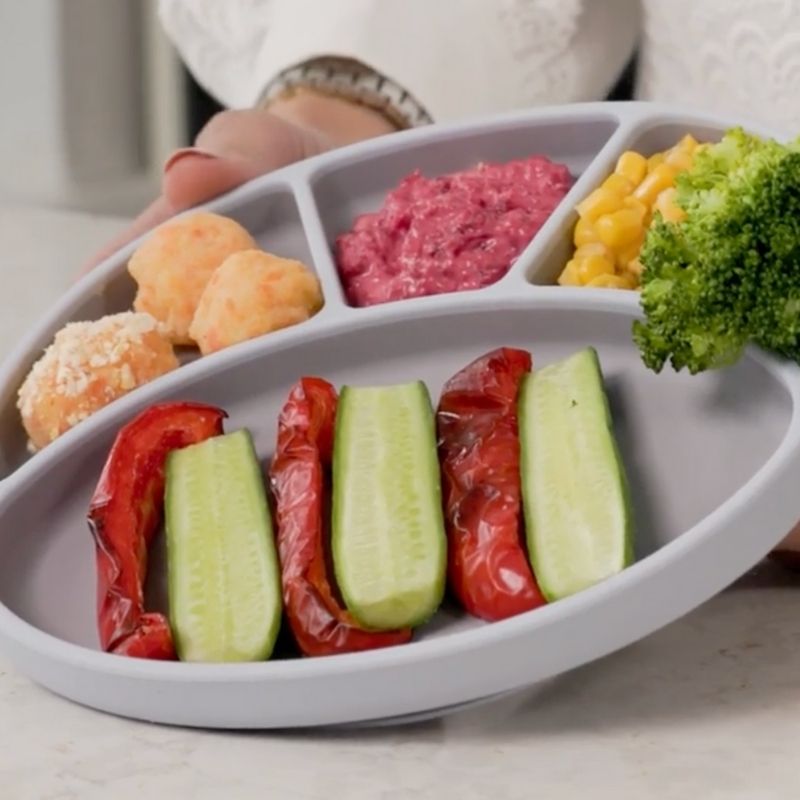Mealtime adventures are better with Bibado! Let our award-winning products make a difference to your weaning journey.
 Shop Now
Shop Now


Veggies are packed with vitamins, minerals, and fibre — all essential for your baby’s growth and development. The good news? With a few creative tricks, you can make veggies fun, flavourful, and easy for your baby to enjoy.

Introducing your little one to solid foods is an exciting milestone but the early days of food prep can be a minefield for parents. One common worry for is: “How do I make sure my baby eats enough vegetables?”
Here are some tried-and-tested tips and tricks to pack more veggies into baby-led weaning meals.
Babies are born with a preference for sweet flavours, so it makes sense to start with veggies that are naturally sweet and mild:
Steam or roast these until they’re soft enough to mash easily between your fingers, and serve them in baby-friendly shapes (like thick sticks or small chunks). Once your baby’s familiar with these, you can gradually introduce more bitter or earthy veggies.
Once your baby is used to self-feeding, start adding veggies into meals they already enjoy. For example:
This helps babies learn that veggies are just part of everyday eating — not something separate or “special.”
Roasting brings out the natural sweetness in vegetables and adds new textures for your baby to explore. Try roasted carrots, bell peppers, or courgettes — soft on the inside, slightly crisp on the outside.
Pro tip: Drizzle with a bit of olive oil and sprinkle with mild herbs (like rosemary or oregano) before roasting. Flavourful doesn’t have to mean salty!
Babies eat with their eyes, too! Offer a rainbow of colours and interesting shapes:
Use small cutters to make veggie “stars” or “hearts” from cooked beetroot or courgette slices — fun for both you and baby!
Babies love dipping! Use veggie-based dips to encourage exploration and flavour variety. Great options include:
Even if your baby just plays with the dip initially, they’re still learning about textures and tastes.
Baby-led weaning works best with foods babies can grasp. Mix veggies into:
These are easy to batch-cook and freeze, making veggie-filled meals quick and stress-free.
It’s normal for babies to reject new foods — especially veggies — the first few times. Research shows it can take 10–15 exposures before a baby accepts a new flavour. Keep offering veggies in different ways, without pressure.
If they toss it on the floor, smile and try again another day. Try a no-thank-you plate where they can pop foods they don’t want to eat or try. This ensures they are still getting exposure to them and means you’re not just taking them ‘off the menu’. Consistency is key!
Babies learn by watching you. If they see you enjoying a colourful plate of vegetables, they’ll be more curious about trying them too. Family-style meals — where everyone eats the same food — are one of the best parts of baby-led weaning.
For older babies (9+ months), pack veggie snacks like:
Keep them handy for quick, healthy munching.
Getting plenty of veggies into baby-led weaning doesn’t have to be a struggle. With patience, creativity, and variety, your little one will learn to love the flavours of real, wholesome food.
Remember: the goal isn’t perfection — it’s exposure. Every time your baby touches, smells, or tastes a vegetable, they build positive food experiences that set the stage for lifelong healthy eating.
Bonus Tip: Don’t stress about how much actually gets eaten in the early stages — baby-led weaning is as much about learning and exploring as it is about nutrition.
Follow us for more delicious, nutritious bite-size Bibado goodness